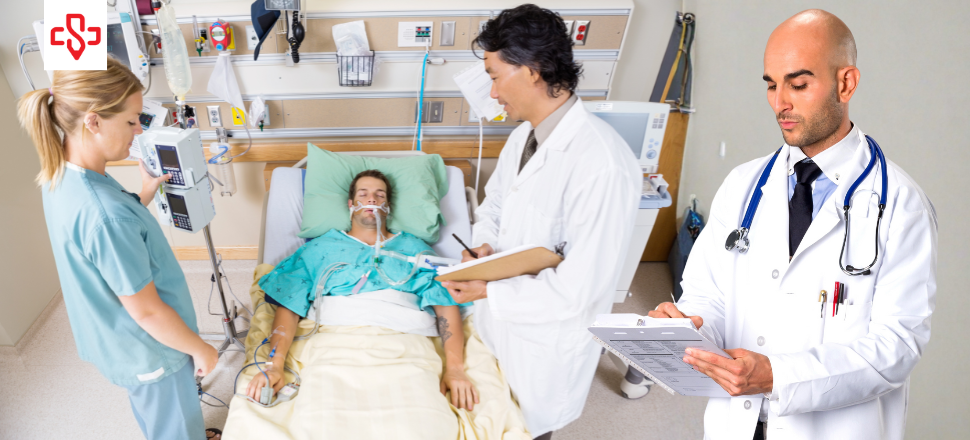In today’s healthcare landscape, efficiency and accuracy in documentation are non-negotiable. Hospitals and clinics are exploring every option, from telescribing to AI-assisted note-taking. While these models bring convenience, they often miss one crucial element: observation.
Live medical scribes are physically present, embedded in the care team, and able to capture more than just spoken words. Unlike remote models, they pick up on nonverbal cues, workflow dynamics, and clinical details that enrich patient records and protect providers. This observational value is one of the strongest reasons why emergency department scribes and specialty scribes remain irreplaceable.
Why Observation Matters in Clinical Documentation
Medicine is more than dialogue. Providers rely on gestures, subtle findings, and team interactions to guide care. Without observation, documentation risks becoming flat, missing key details.
Live EMR scribes:
- Capture the provider’s exam findings, even if not spoken aloud.
- Notice when a nurse’s cue or lab result changes the care plan.
- Document environmental details relevant to patient safety and treatment.
As one emergency physician noted in AMA News: “A good scribe doesn’t just hear what I say — they see what I see, and that context is invaluable.”
What Remote Models Miss
-
Nonverbal Cues
A provider might silently indicate a lesion, murmur, or swelling without verbalizing it. A live medical scriber records it; a telescribe cannot.
-
Provider Gestures and Shorthand
Physicians often use shorthand — nods, abbreviations, or quick references — that make sense in context. ER medical scribes present in the room understand these cues, while remote scribes depend solely on audio.
-
Environmental Dynamics
In emergency departments, alarms, patient handoffs, and rapid team exchanges happen simultaneously. ED medical scribes on-site adapt quickly; remote models often get lost in the noise.
Emergency Departments: Observation Under Pressure
EDs are unpredictable. A trauma case may unfold in seconds, with multiple providers calling out fragmented instructions. A live emergency department scribe captures what matters while filtering distractions.
In these environments, the observational advantage of live scribes ensures:
- Accurate, real-time records under chaotic conditions.
- Proper attribution of orders and impressions.
- Documentation that reflects the full clinical picture.
Remote scribes, relying only on sound, often struggle to differentiate voices or keep pace.
Specialty Clinics: Precision Through Observation
In dermatology, cardiology, or urology clinics, visits may be brief but detail-heavy. A dermatologist might point silently to a lesion for biopsy. A cardiologist might adjust medication while reviewing test results with the patient.
Live medical scribes in speciality clinic ensure these details are not lost. By observing provider actions directly, they add nuance and accuracy that medical scribe online or telescribing models cannot replicate.
The Human Insight Advantage
Observation is only part of the equation. Live scribes also bring human judgment, knowing which details matter clinically and which do not.
- Filtering Noise: Not every comment in the room belongs in the EMR. Live scribes distinguish between clinical content and casual conversation.
- Adapting in Real Time: Providers can clarify with a glance or quick phrase.
- Team Integration: Embedded in the workflow, live scribes anticipate needs better than remote options.
The result is documentation that is not only complete but also context-rich.
Why Observation Strengthens Compliance and Revenue
Observation doesn’t just improve accuracy — it protects compliance and revenue.
- Compliance: Regulations require complete notes. Missing nonverbal findings or provider shorthand can put hospitals at risk.
- Revenue: Details matter for coding. If documentation doesn’t reflect full complexity, providers are underpaid for services delivered.
- Audit Protection: Complete, context-aware notes hold up better in payer or legal audits.
EMR scribes on-site help ensure no detail slips through the cracks.
Balancing Technology With Human Presence
While telescribing and AI solutions can supplement, they can’t replace the observational presence of a live medical scriber. The ideal model often combines technology with human oversight — but in EDs and specialty clinics, live scribes remain the frontline solution.
As the American College of Emergency Physicians notes: “Documentation accuracy is central to both quality of care and financial sustainability.”
That accuracy requires observation — something only live scribes can consistently deliver.
Satisfaction Starts With Attention
Healthcare is more than words spoken in a room. It’s gestures, reactions, findings, and context — all of which shape care decisions. Remote documentation models capture dialogue, but they miss the richness of observation.
That’s why live medical scribes remain essential. From the chaos of emergency departments to the precision of specialty clinics, they capture the full picture, ensuring accuracy, compliance, and patient-centered care.
In the end, observation is more than an advantage — it’s a necessity. And it’s exactly what keeps live emergency department scribes and specialty scribes at the heart of modern healthcare.
Take the next step toward smarter documentation with medical scribing services. And get your free quote from Scribe.ology today!



